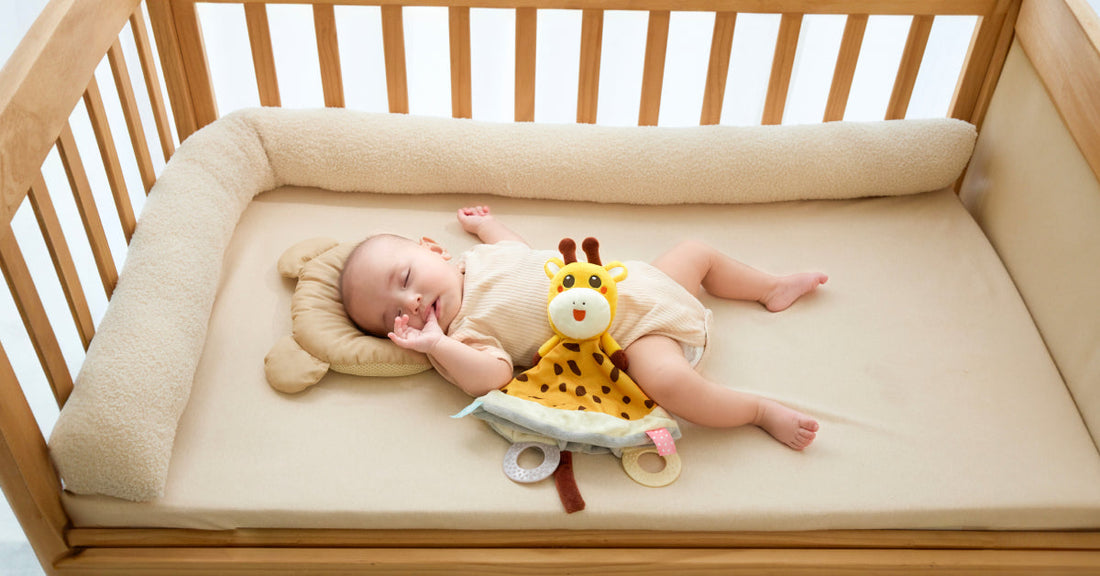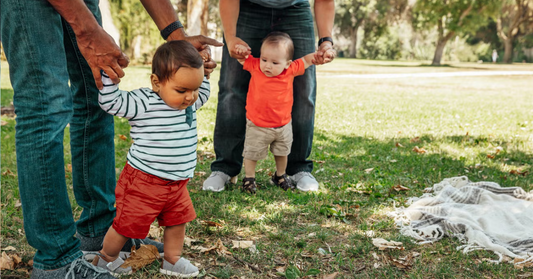What Is a Lovey and Why Do Babies Love Them?

A lovey—a soft, cuddly blanket or plush toy—offers comfort and emotional security, helping babies self-soothe and sleep independently. This article explains the benefits of loveys, when to introduce them safely, what to look for when choosing one, and how to make the transition smooth for your baby.
Many babies struggle to sleep alone or feel anxious when separated. This can leave parents exhausted. A lovey offers comfort, helping babies feel safe, calm, and secure.
A lovey is a soft, cuddly object—often a small blanket or plush animal—that provides comfort and emotional security for babies, especially during sleep or separation.
Though that answers the basics, you may wonder how to use one properly, when to introduce it, and which type is best. Let’s explore all the details.
Why Is a Lovey Important for a Baby’s Development?
Sleep struggles and separation anxiety are common among infants. Many parents look for ways to ease these issues gently and effectively. A lovey can be a powerful emotional support tool.
Loveys help babies self-soothe, promoting emotional development and better sleep habits by offering a familiar, comforting presence.
When a baby forms an attachment to a lovey, it can serve as a transitional object—something that represents a parent's love and presence even when the parent isn’t nearby. This helps build emotional resilience and encourages independent sleep skills. Over time, the familiar scent, feel, and appearance of a lovey create a sense of security. For babies who attend daycare or spend time with different caregivers, a lovey can also ease the transition between environments. In short, it’s not just a toy—it’s a vital emotional anchor.
When Can a Baby Start Using a Lovey Safely?
Worried a lovey might pose a safety risk in the crib? You’re not alone. Knowing the right time to introduce it can ease your concerns.
Babies can safely use a lovey during sleep from around 12 months old, once they can roll over and move objects independently.
Before 12 months, soft toys or blankets in the crib are not recommended due to suffocation risks. However, you can begin introducing a lovey earlier during supervised awake times. Let it absorb your scent by keeping it close during nursing or cuddling sessions. Then, once your baby reaches the appropriate developmental stage, the lovey will already feel familiar and comforting. Always check for loose parts, ensure breathable materials, and opt for designs made specifically for infants.
What Types of Loveys Are Best for Newborns and Infants?
With so many options on the market, choosing a safe and suitable lovey can be overwhelming. Pick the wrong one, and it could become a frustration rather than a comfort.
The best loveys are breathable, hypoallergenic, and machine-washable with soft textures and securely attached features to ensure safety.
Look for loveys made from organic cotton or soft fleece with no small detachable parts. Avoid anything with buttons, beads, or long ribbons. A great lovey is small enough for baby hands to grip easily, but large enough to snuggle. Machine-washable options are ideal for hygiene, as babies often chew or drool on them. Loveys that double as teething toys or have sensory textures (like crinkly fabric or tags) can offer extra stimulation and relief.
Tumama Kids offers lovey security blanket that meet all these safety guidelines — made from ultra-soft, hypoallergenic materials.
How to Introduce a Lovey to Your Baby?
Some babies are cautious with new items. A slow, thoughtful introduction can make all the difference in acceptance and emotional bonding.
To introduce a lovey, start by keeping it near during bonding times, like feeding or cuddling, so it absorbs your scent and feels familiar.
Place the lovey between you and your baby during soothing routines such as rocking, reading, or nursing. Let your baby explore it with their hands and mouth while you’re present. The more they associate it with warmth and comfort, the more likely they are to accept it. After a few weeks, it will become a recognizable source of security. Once your baby is 12 months or older, you can safely allow the lovey in the crib to support independent sleep.
Can a Lovey Help with Sleep Training or Separation Anxiety?
If bedtime feels like a battle and your baby cries every time you leave the room, a lovey could be the missing piece to your sleep strategy.
Yes, loveys provide consistent comfort, helping babies transition to independent sleep and easing anxiety when separated from caregivers.
Sleep training becomes more manageable when your baby has a trusted object nearby. During sleep routines, the lovey signals it’s time to wind down and rest. When parents aren’t present, the lovey becomes a constant companion that offers familiar smells and textures, helping ease stress. For babies starting daycare or weaning off co-sleeping, this consistent presence reduces emotional distress. Over time, your baby learns to self-soothe and rely less on physical presence to feel secure.
How Many Loveys Should You Have on Hand?
What happens if the lovey gets lost or dirty? A single backup can save parents from many sleepless nights or emotional meltdowns.
Having two or three identical loveys ensures you always have a clean backup in case one gets lost or needs washing.
Keep one in the crib, another in the diaper bag, and a third stored away. Rotate them regularly so they wear at the same rate and carry similar scents. Babies often notice even subtle differences in their lovey’s texture or smell, so make sure all spares are used equally. This small preparation step can be a lifesaver during travel, laundry days, or daycare mix-ups.
Conclusion
Loveys are more than just cuddly toys—they’re powerful tools for comfort, sleep, and emotional development. Introduce them safely, choose wisely, and keep backups ready for peace of mind.







0 comments